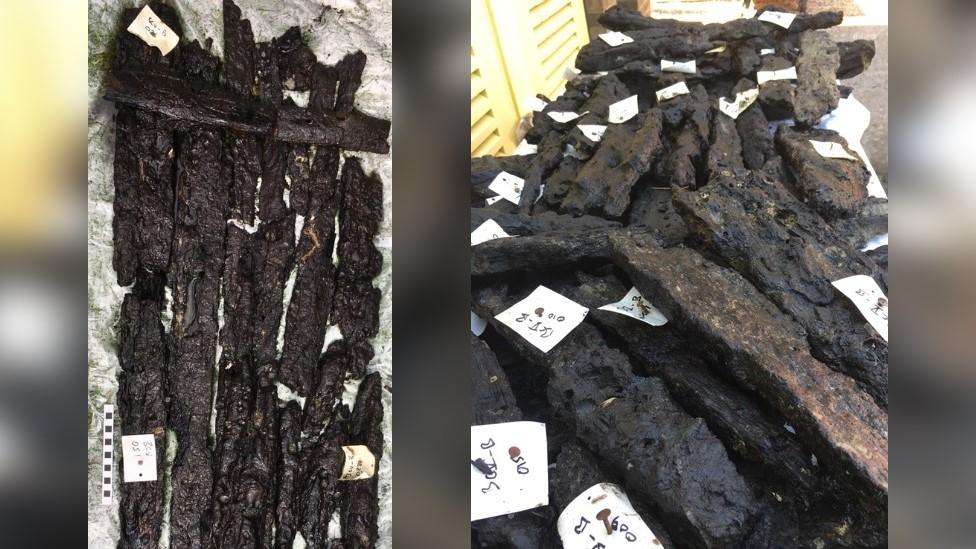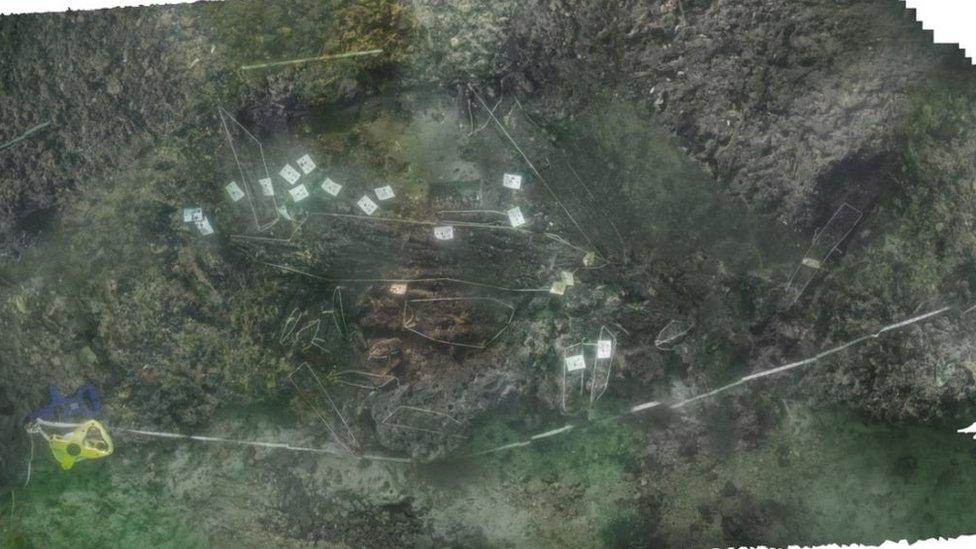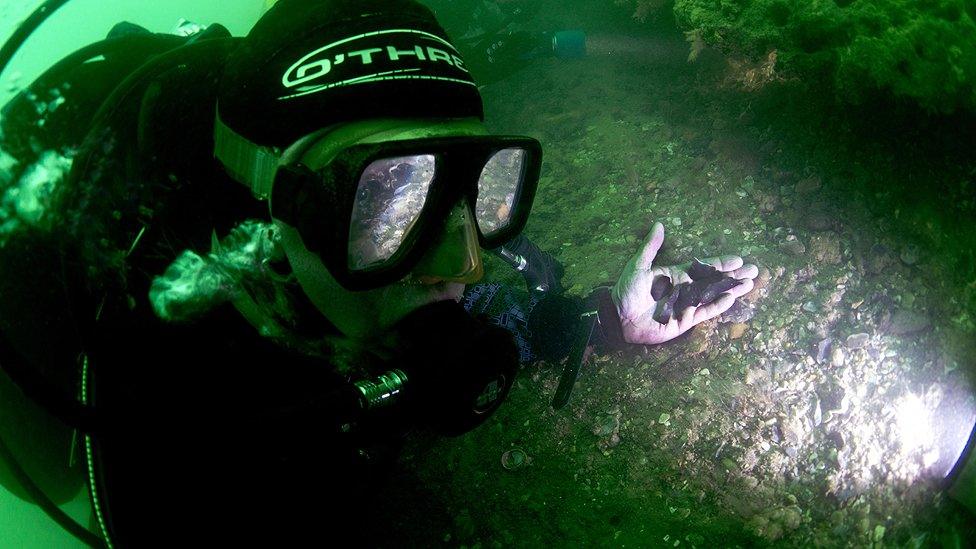Wooden Stone Age platform found on seabed off Isle of Wight
- Published

The wood is being treated at the National Oceanography Centre in Southampton
An 8,000 year-old wooden platform has been discovered on the seabed off the Isle of Wight.
The structure was found by the Maritime Archaeological Trust 36ft (11m) below sea level east of Yarmouth at a site which was dry land during the Stone Age.
It was next to what is thought to be the world's oldest boat-building.
The trust said it was the "most cohesive, wooden Stone Age structure ever found in the UK".
The site at Bouldnor Cliff was first discovered in 2005 and contains an arrangement of timbers that could be platforms, walkways or collapsed structures. It is the only such submerged Mesolithic landscape currently known in the UK.

The platform was found 11m below sea level
Earlier this year divers from the trust spotted the new structure and excavations revealed a platform consisting of split timbers, several layers thick, resting on horizontally laid round-wood foundations.
Trust director Garry Momber said: "This new discovery is particularly important as the wooden platform is part of a site that doubles the amount of worked wood found in the UK from a period that lasted 5,500 years.
"The site contains a wealth of evidence for technological skills that were not thought to have been developed for a further couple of thousand years, such as advanced wood working.

The site of the discovery was digitally scanned
During the period when there was human activity on the site, it was dry land with lush vegetation and the Isle of Wight was still connected to mainland Europe.
The wood has been taken to the National Oceanography Centre (NOC) in Southampton to record, study, desalinate and reconstruct the collection of timbers.
The trust also warned that, being underwater, there are no regulations to protect the site and it is threatened by ongoing erosion.
It is hoped the find will eventually be put on public display.
- Published28 March 2014

- Published20 November 2014

- Published16 February 2012
